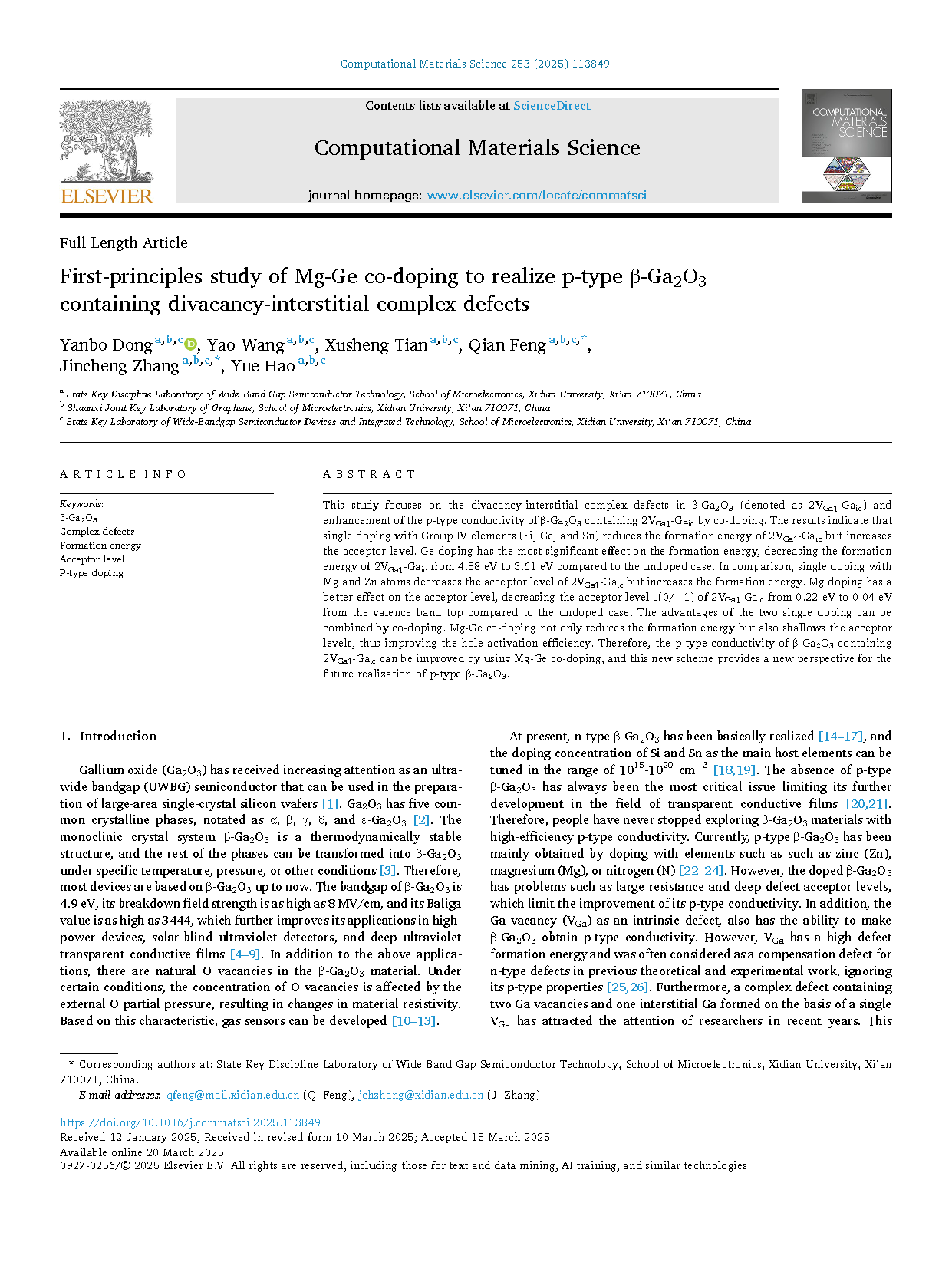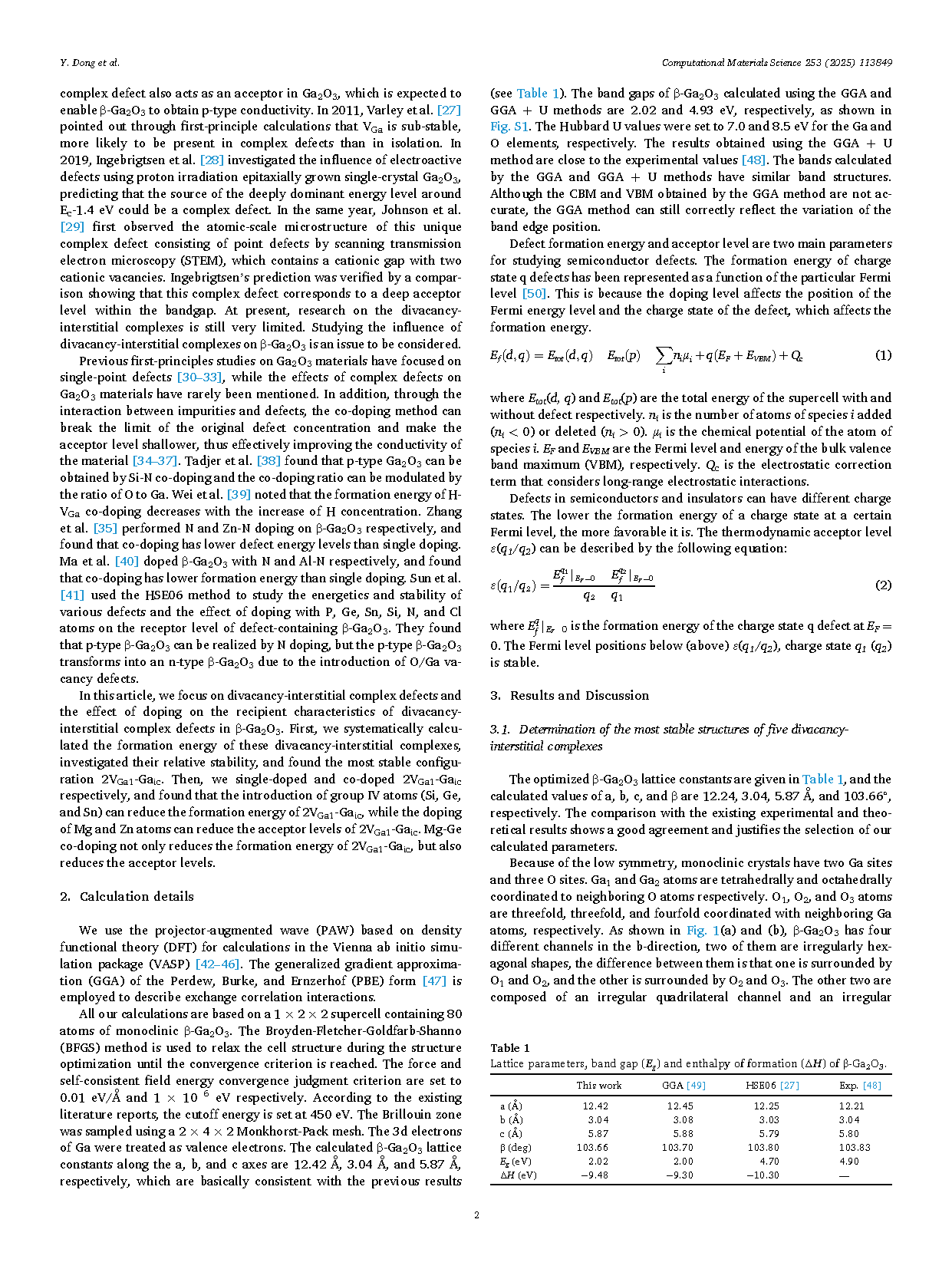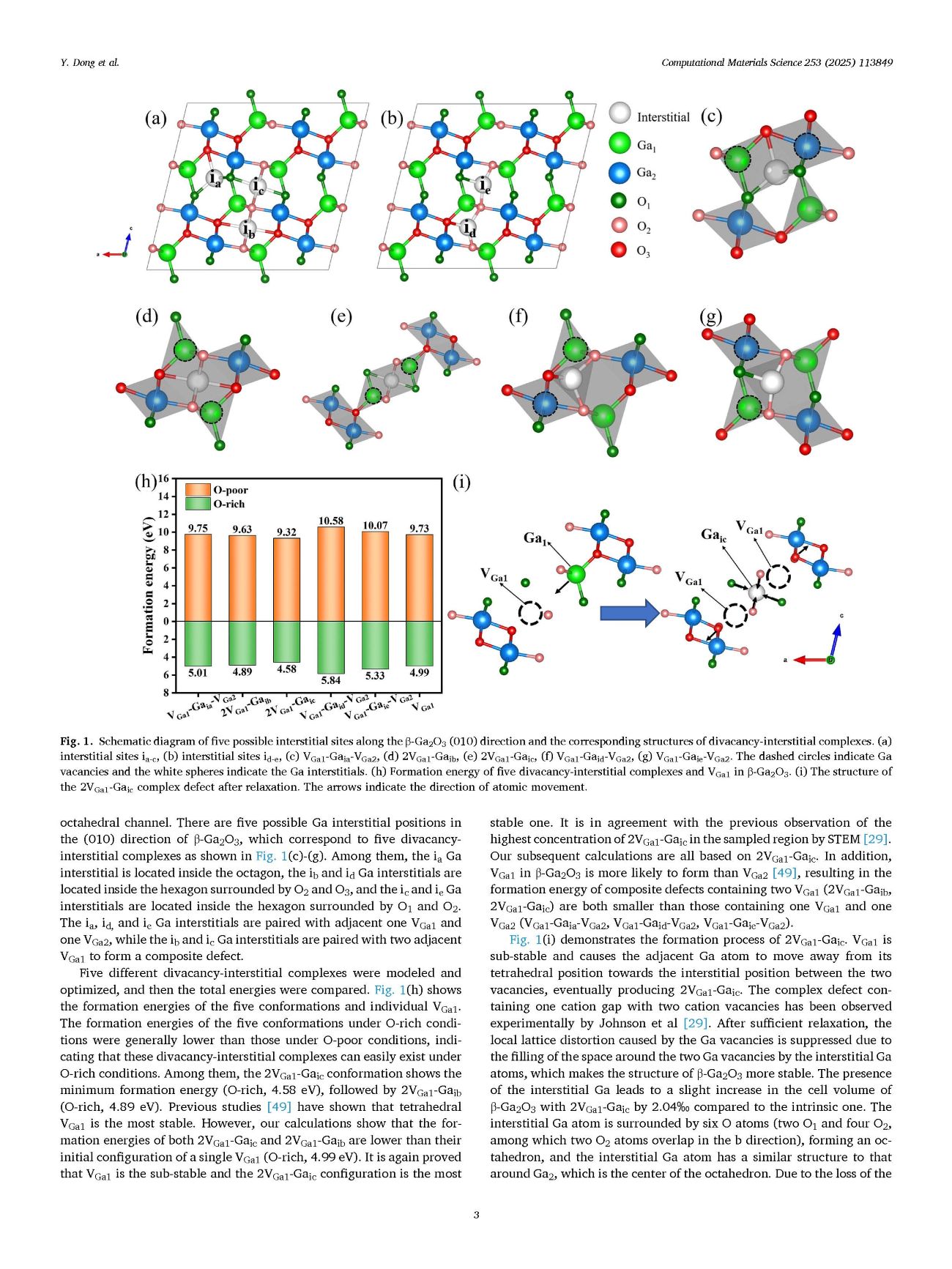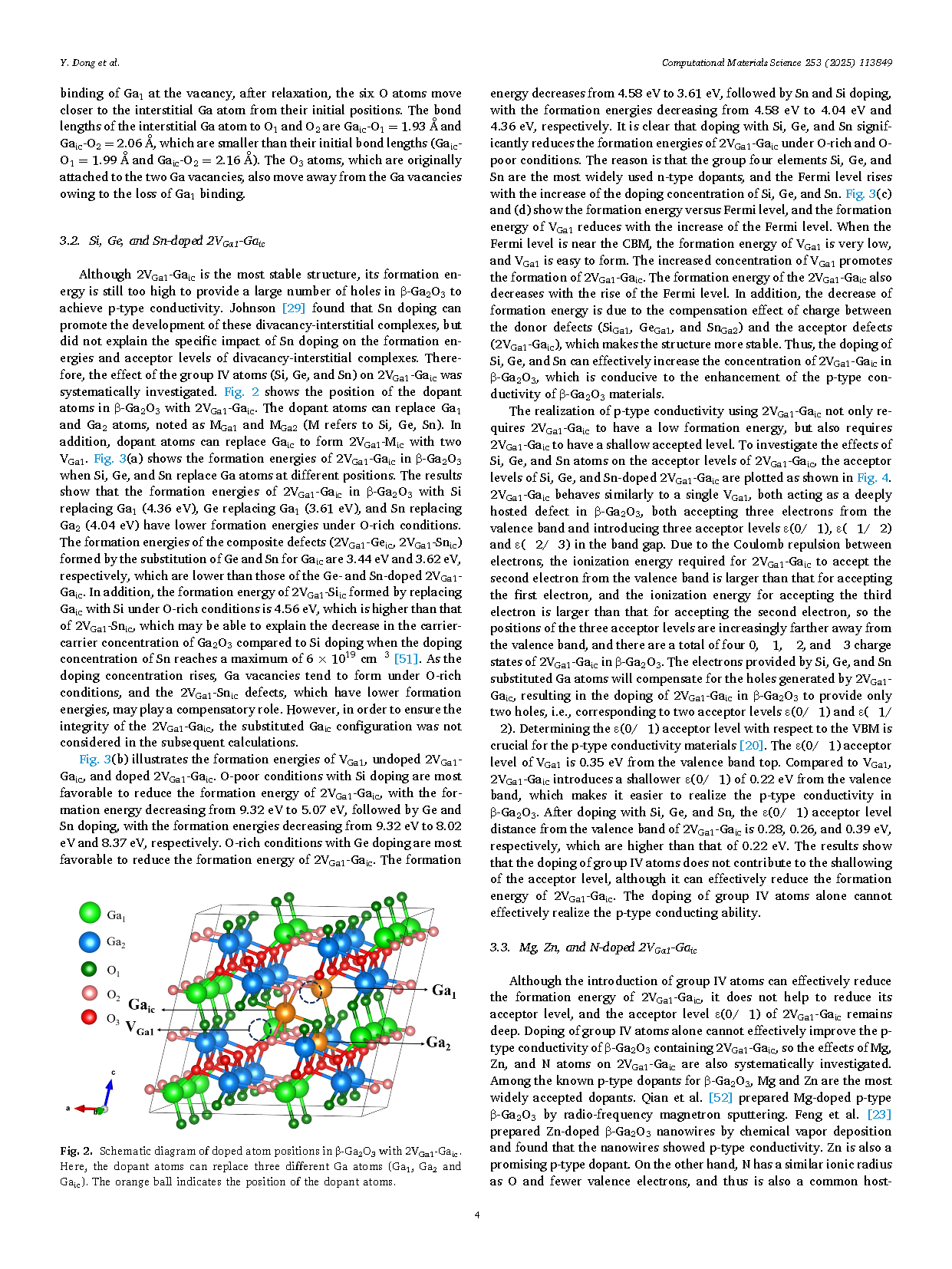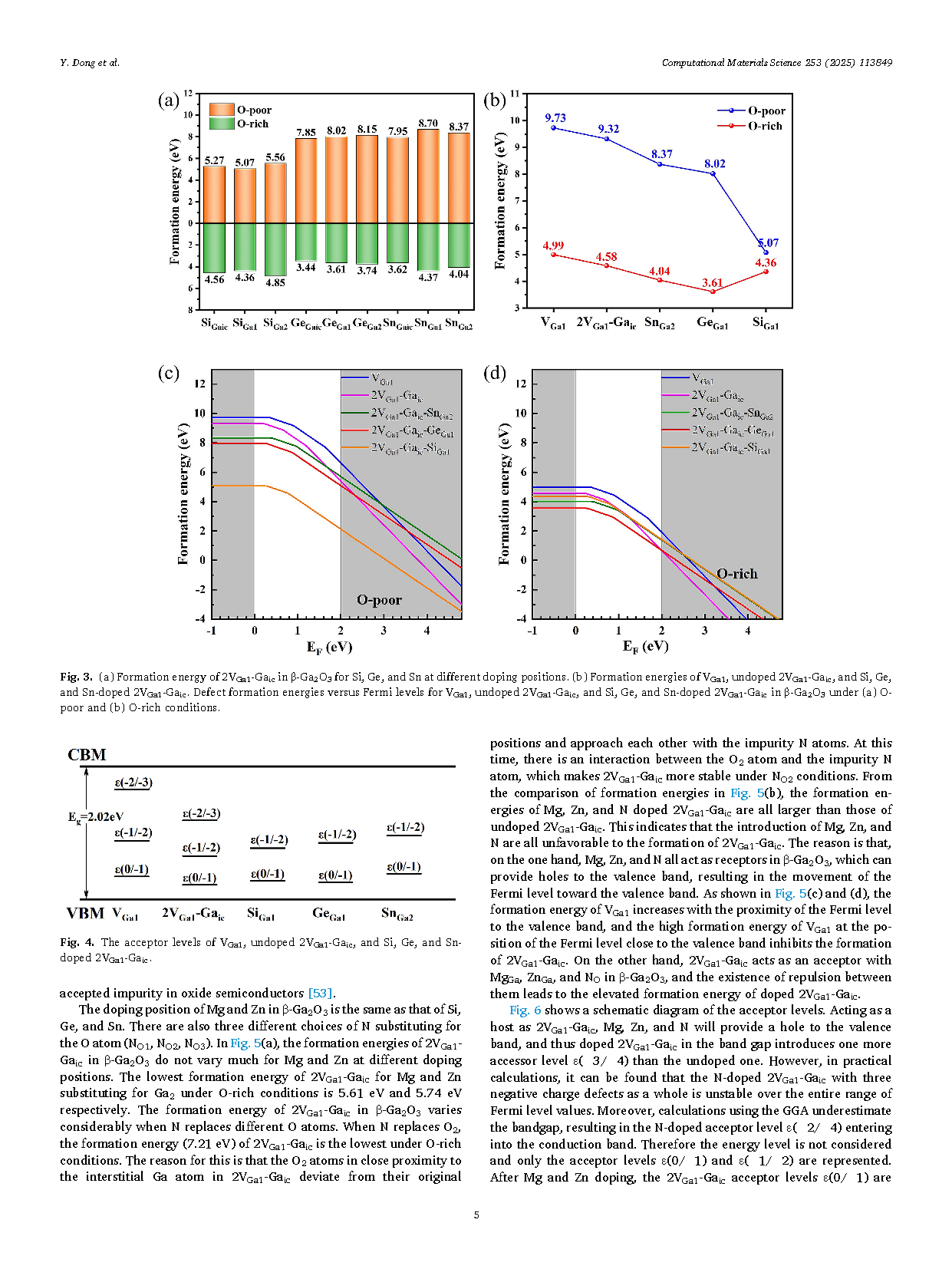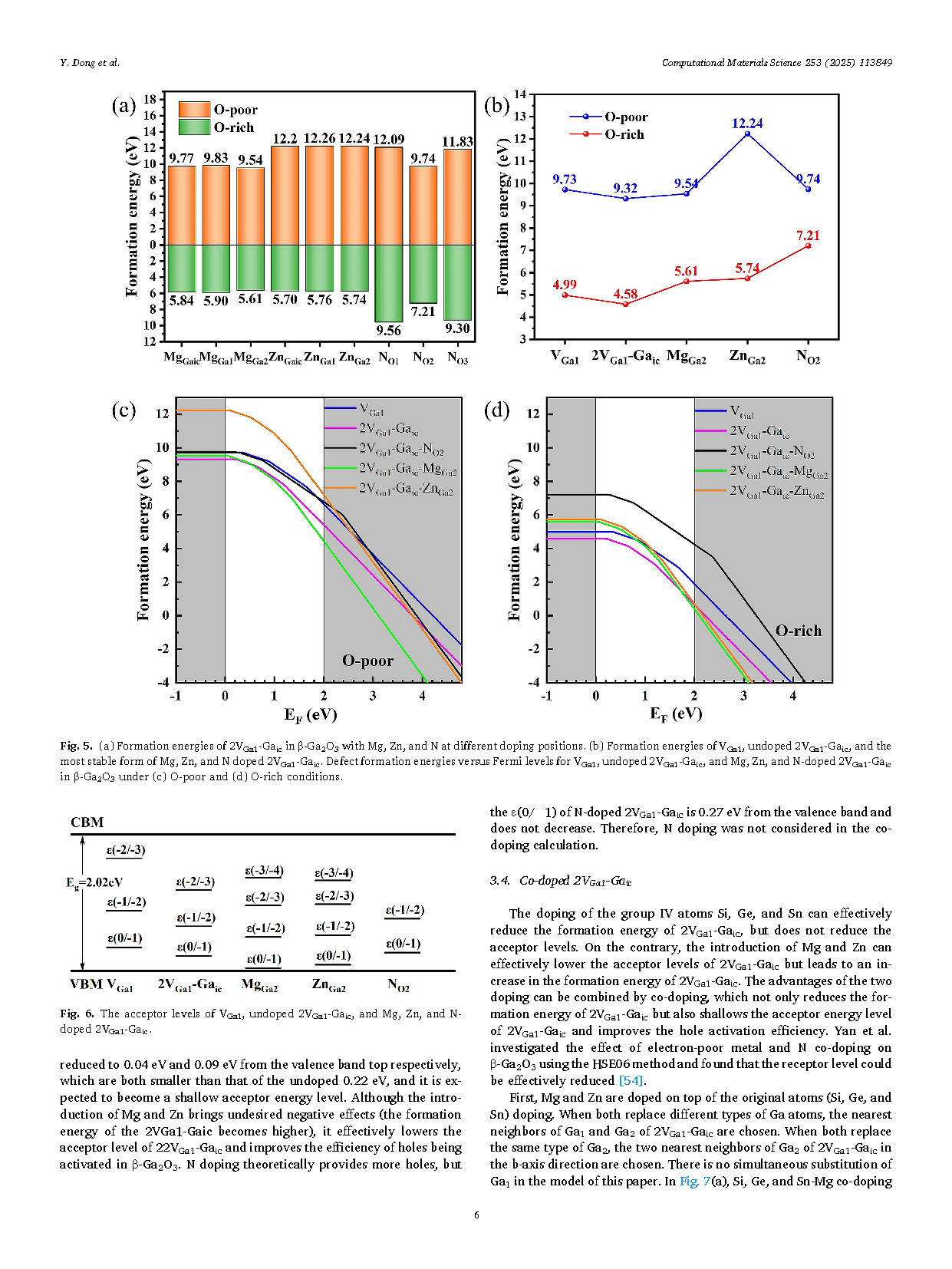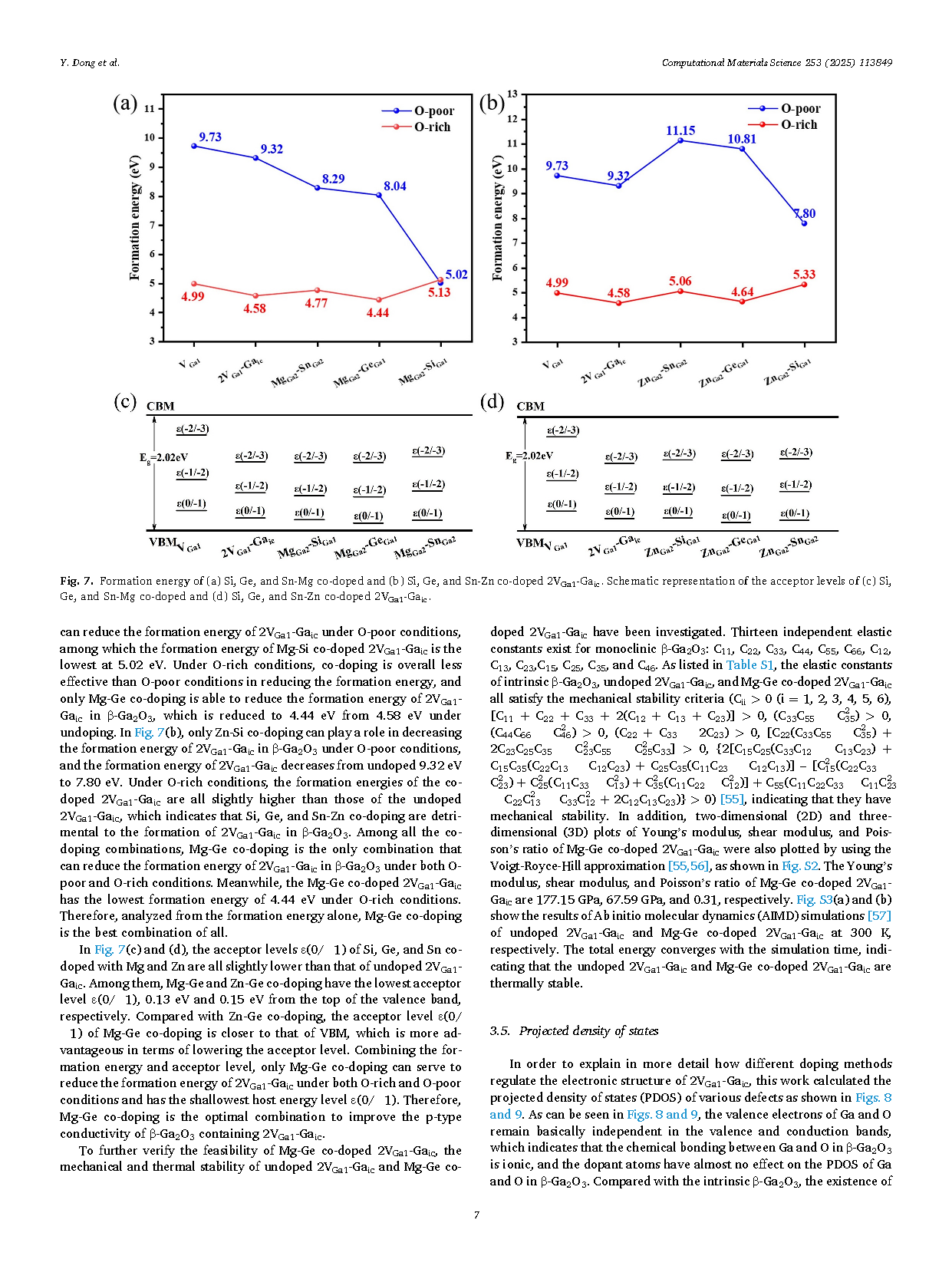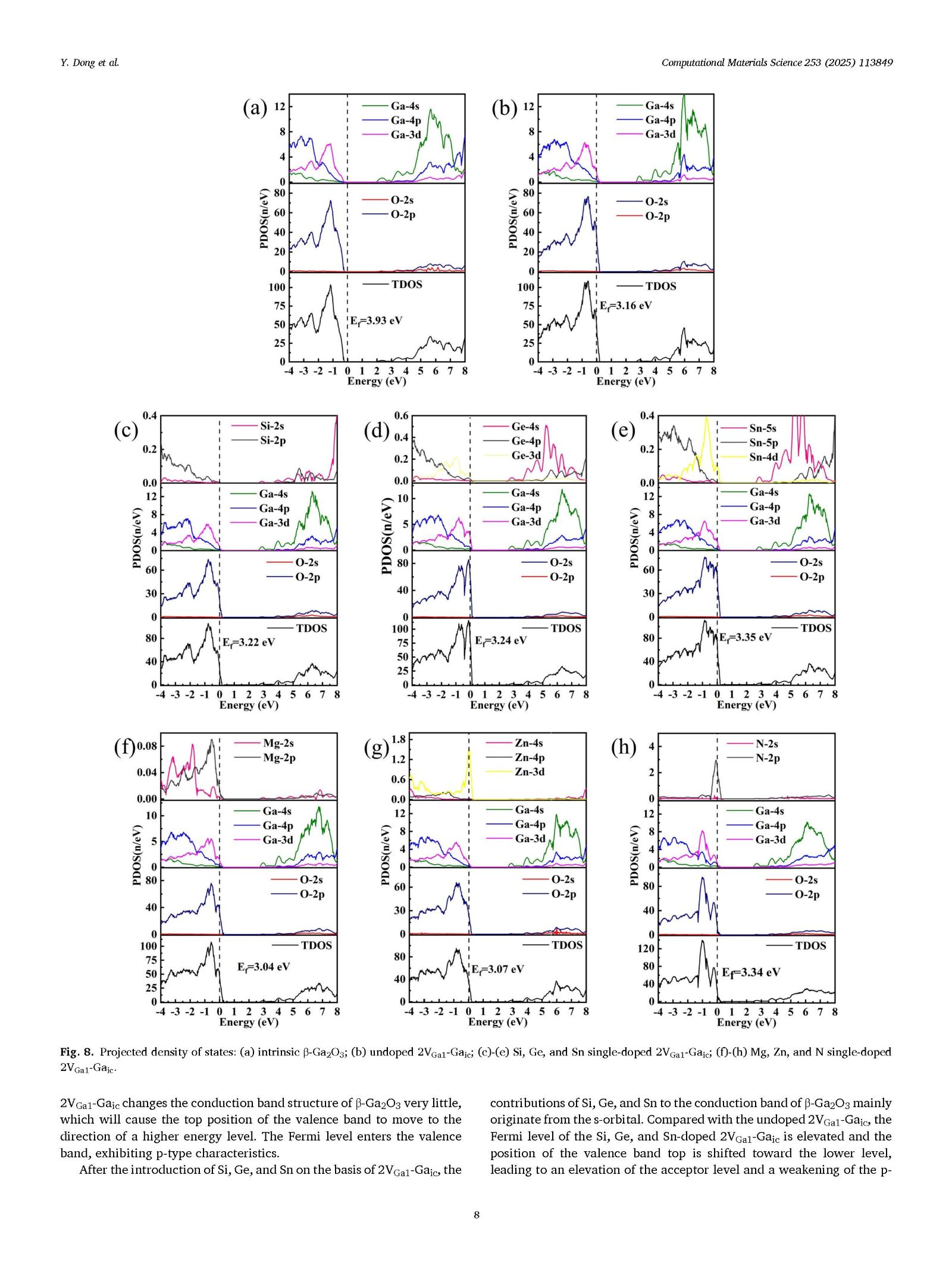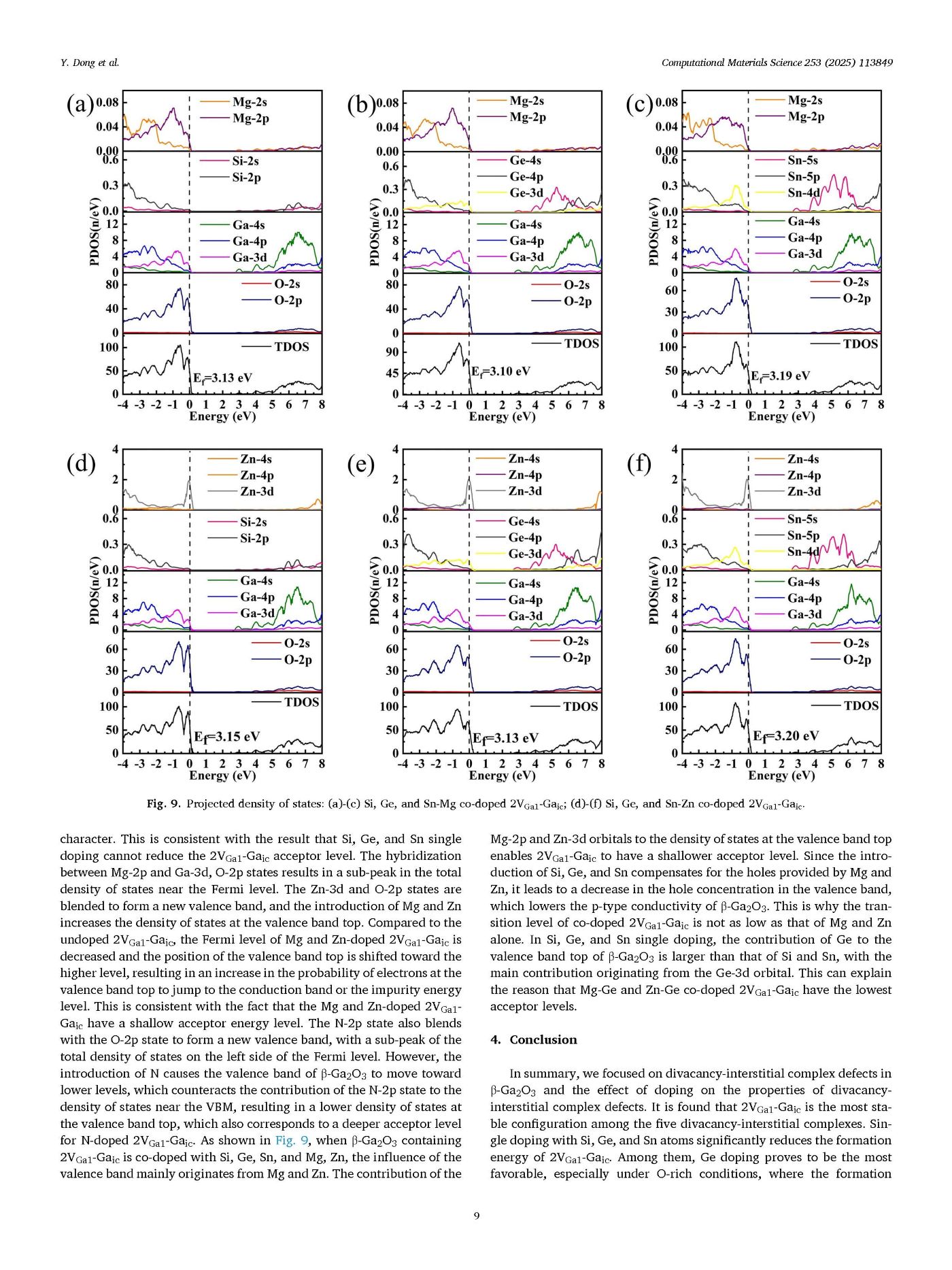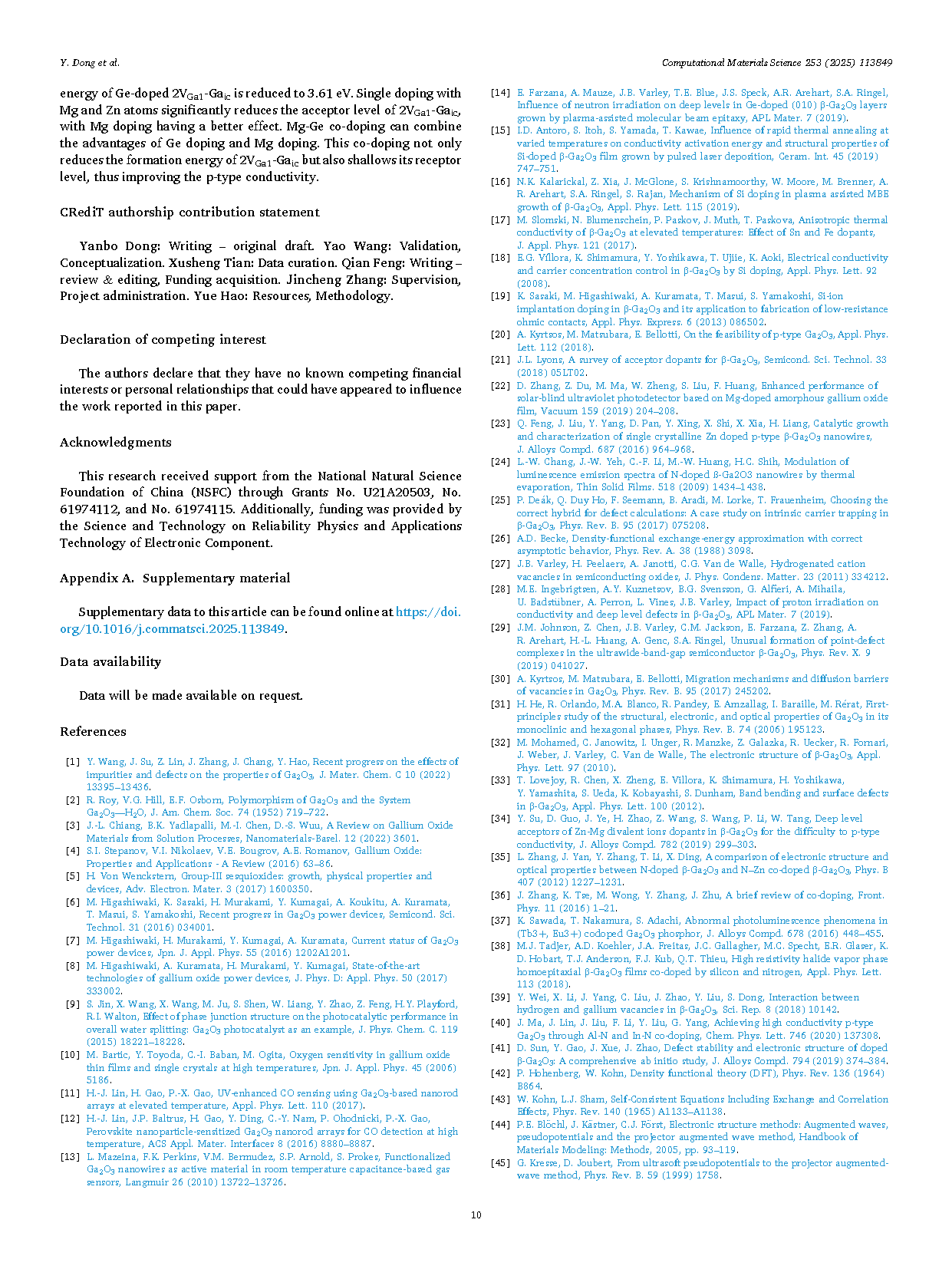

【Member Papers】 Xidian University --- First-principles study of Mg-Ge co-doping to realize p-type β-Ga₂O₃ containing divacancy-interstitial complex defects
日期:2025-04-01阅读:521
Researchers from the Xidian University have published a dissertation titled "First-principles study of Mg-Ge co-doping to realize p-type β-Ga2O3 containing divacancy-interstitial complex defects" in Computational Materials Science.
Project Support
This research received support from the National Natural Science Foundation of China (NSFC) through Grants No. U21A20503, No. 61974112, and No. 61974115. Additionally, funding was provided by the Science and Technology on Reliability Physics and Applications Technology of Electronic Component.
Background
β-Ga2O3 is an ultra-wide bandgap (UWBG) semiconductor with a bandgap of 4.9 eV, a high breakdown field of 8 MV/cm, and a Baliga figure of merit of 3444, making it highly suitable for applications in high-power devices, deep ultraviolet (DUV) photodetectors, and transparent conductive films. However, one of the major challenges limiting its broader adoption is the difficulty in achieving p-type conductivity.
While n-type β-Ga2O3 has been successfully achieved through doping with Si and Sn, enabling carrier concentrations between 1015-1020 cm-3, p-type doping remains elusive due to deep acceptor levels and high defect formation energies. Efforts to introduce p-type conductivity using elements like Zn, Mg, and N have faced high resistivity and deep acceptor levels, which hinder hole activation.
One promising approach involves utilizing Ga vacancy (VGa) defects, which can act as acceptors. However, VGa typically has high formation energy, making it less effective for p-type conduction. Recent studies suggest that divacancy-interstitial complex defects (2VGa1-Gaic), where two Ga vacancies are coupled with an interstitial Ga atom, may act as a more stable acceptor complex.
This study investigates the formation energy and electronic properties of these complex defects, exploring how Mg-Ge co-doping can enhance the p-type conductivity of β-Ga2O3 by reducing formation energy and shallowing acceptor levels.
Abstract
This study focuses on the divacancy-interstitial complex defects in β-Ga2O3 (denoted as 2VGa1-Gaic) and enhancement of the p-type conductivity of β-Ga2O3 containing 2VGa1-Gaic by co-doping. The results indicate that single doping with Group IV elements (Si, Ge, and Sn) reduces the formation energy of 2VGa1-Gaic but increases the acceptor level. Ge doping has the most significant effect on the formation energy, decreasing the formation energy of 2VGa1-Gaic from 4.58 eV to 3.61 eV compared to the undoped case. In comparison, single doping with Mg and Zn atoms decreases the acceptor level of 2VGa1-Gaic but increases the formation energy. Mg doping has a better effect on the acceptor level, decreasing the acceptor level ε(0/−1) of 2VGa1-Gaic from 0.22 eV to 0.04 eV from the valence band top compared to the undoped case. The advantages of the two single doping can be combined by co-doping. Mg-Ge co-doping not only reduces the formation energy but also shallows the acceptor levels, thus improving the hole activation efficiency. Therefore, the p-type conductivity of β-Ga2O3 containing 2VGa1-Gaic can be improved by using Mg-Ge co-doping, and this new scheme provides a new perspective for the future realization of p-type β-Ga2O3.
Highlights
The relative stability of five complex defects was investigated.
Si, Ge, and Sn single doping can reduce the formation energy of the complex defect system.
Mg and Zn single doping can reduce the acceptor level of the complex defect system.
Mg-Ge co-doping can realize p-type doping of the complex defect system.
Conclusion
In summary, we focused on divacancy-interstitial complex defects in β-Ga2O3 and the effect of doping on the properties of divacancy-interstitial complex defects. It is found that 2VGa1-Gaic is the most stable configuration among the five divacancy-interstitial complexes. Single doping with Si, Ge, and Sn atoms significantly reduces the formation energy of 2VGa1-Gaic. Among them, Ge doping proves to be the most favorable, especially under O-rich conditions, where the formation energy of Ge-doped 2VGa1-Gaic is reduced to 3.61 eV. Single doping with Mg and Zn atoms significantly reduces the acceptor level of 2VGa1-Gaic, with Mg doping having a better effect. Mg-Ge co-doping can combine the advantages of Ge doping and Mg doping. This co-doping not only reduces the formation energy of 2VGa1-Gaic but also shallows its receptor level, thus improving the p-type conductivity.
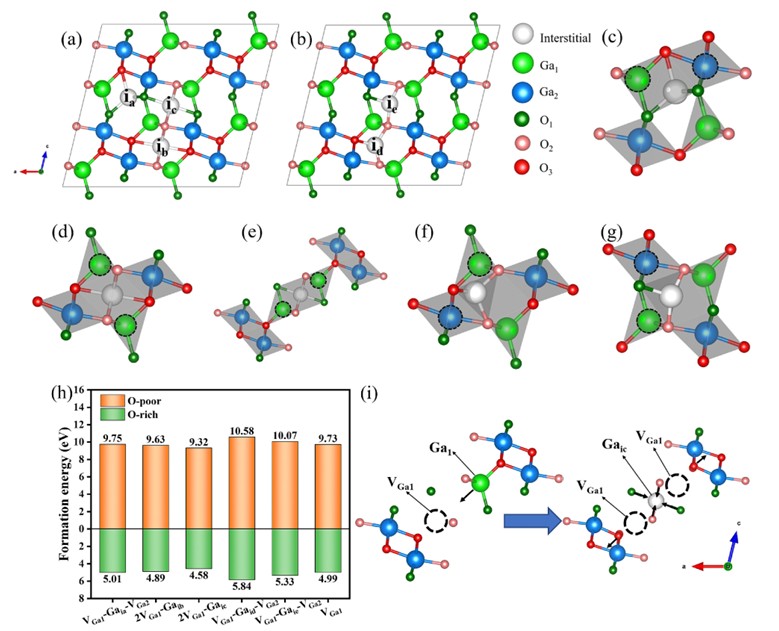
Fig. 1. Schematic diagram of five possible interstitial sites along the β-Ga2O3 (010) direction and the corresponding structures of divacancy-interstitial complexes. (a) interstitial sites ia-c, (b) interstitial sites id-e, (c) VGa1-Gaia-VGa2, (d) 2VGa1-Gaib, (e) 2VGa1-Gaic, (f) VGa1-Gaid-VGa2, (g) VGa1-Gaie-VGa2. The dashed circles indicate Ga vacancies and the white spheres indicate the Ga interstitials. (h) Formation energy of five divacancy-interstitial complexes and VGa1 in β-Ga2O3. (i) The structure of the 2VGa1-Gaic complex defect after relaxation. The arrows indicate the direction of atomic movement.
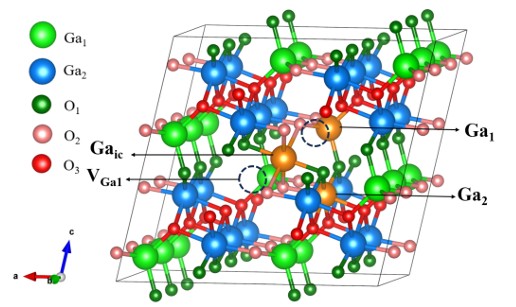
Fig. 2. Schematic diagram of doped atom positions in β-Ga2O3 with 2VGa1-Gaic. Here, the dopant atoms can replace three different Ga atoms (Ga1, Ga2 and Gaic). The orange ball indicates the position of the dopant atoms.
DOI:
doi.org/10.1016/j.commatsci.2025.113849
